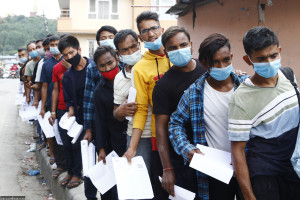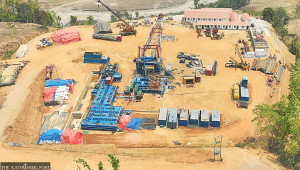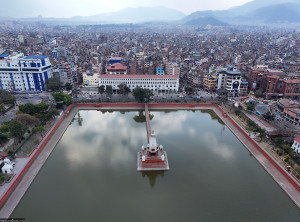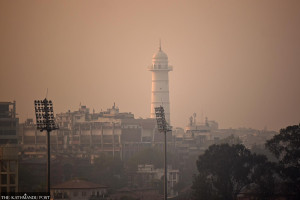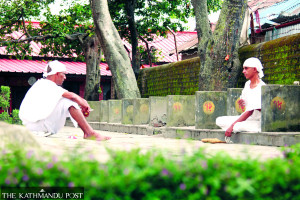Money
House panel asks for status report on Fast Track, airport projects
The parliamentary Development Committee on Thursday directed the government to issue a ‘white paper’ on the status of the proposed Second International Airport (SIA) in Nijgadh and the Kathmandu-Tarai Fast Track, two mega projects that have been dogged by controversy from their inception.
The parliamentary Development Committee on Thursday directed the government to issue a ‘white paper’ on the status of the proposed Second International Airport (SIA) in Nijgadh and the Kathmandu-Tarai Fast Track, two mega projects that have been dogged by controversy from their inception.
The House panel has given the two ministries involved—Tourism and Civil Aviation and Physical Infrastructure and Transport—a month to produce a report.
The ministries have been instructed to submit a timeline of the development of
the projects. The House
committee also said that the government should construct the schemes with domestic funding.
The SIA plan envisions building a modern airport in the southern plains as an alternative to Tribhuvan International Airport in Kathmandu, the country’s sole international aerial gateway which is bedevilled by extreme congestion and winter fog.
The 76-km Kathmandu-Tarai Fast Track will link the Capital with Nijgadh and the planned SIA.
“It’s been three years and we are still discussing the expressway agenda,” said lawmaker Lalit Jung Shahi. “A national priority project is lying immobile which provides an example of the speed at which key schemes progress.” Responding to lawmakers, Minister for Physical Infrastructure Ramesh Lekhak said that the government was committed to moving the expressway project forward after fulfilling some ‘necessary procedures’.
“We will also consider the past government’s decision while moving ahead.” However, Lekhak did not divulge what these ‘necessary procedures’ were.
Last October, the Supreme Court issued an interim order temporarily halting the government’s preparations to award the project to a consortium consisting of Infrastructure Leasing and Financial Services (IL&FS) Transportation Networks, IL&FS Engineering and Construction and Suryavir Infrastructure Construction of India over cost issues.
Following the controversy, the erstwhile Oli administration had announced that Nepal would construct the Fast Track on its own.
The project ran into another storm when Deputy Prime Minister Bimalendra Nidhi, a senior Nepali Congress leader, pushed the government to award the contract to India.
“The government itself has created an unnecessary controversy over the expressway,” said Arjun Karki, secretary of the Infrastructure Ministry. “It’s only a 76-km highway project. But it has been turned into a big geopolitical issue for no reason,” he told lawmakers.
“The Supreme Court issue was settled after the government decided to develop the project with its own resources,” he said. “The project lacks political will,” he said, adding that the Nepal government had the money to build the expressway.
Meanwhile, the SIA project has made some headway. Tourism Secretary Prem Kumar Rai said that they had targeted completing the distribution of land compensation payments this fiscal year or by mid-July next year.
Around 110 households will have to surrender their land to the airport project, and 80 to 85 of them have agreed to receive compensation, he said.
“However, the rest are reluctant to accept the government’s compensation offer, and it could be problematic.”
The government needs to acquire another 84 bighas of land and cut a large number of trees and bushes.
The law requires the project to plant trees elsewhere for every tree it cuts down at the project site.
“The Cabinet has already given the go-ahead to clear the trees and bushes,” said Rai. Around 1,400 squatters will be relocated from the site.
India has been expressing interest in the development of the SIA, but as of now there are no plans to involve India.




 21.63°C Kathmandu
21.63°C Kathmandu




